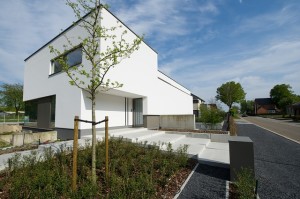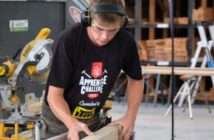Leaky homes, eye-watering prices, an ageing housing stock and a growing population – it’s no surprise housing is likely to be a major election issue.
Design, technical innovation, and industry change could create healthy, affordable houses industry experts believe, despite local government challenges such as the recent Auckland Mayoral Housing Taskforce Report.
University of Auckland, School of Architecture and Planning Senior Lecturer Tricia Austin notes, for example, that New Zealand builds the third-largest houses per sq. m in the world.
“On the whole, we do not build houses cheaply – we build large houses on large green field sites,” she observes.
“In Auckland, when faced with high land costs, we go on building large stand-alone houses but on smaller and smaller plots.
“We concentrate on infill – adding a house onto the rear or front garden, rather than redeveloping the whole site.”
Austin admits that apartments and terrace houses which are much more efficient users of space have been developed, especially in the inner-city suburbs, often on former commercial or light industrial land.
“More extensive redevelopment and production of apartments and townhouses will require amalgamation of adjacent existing dwelling sites to get sufficiently large plots.
“For example, a piece of land currently divided into four sites each with a house on it could provide space for up to 18 dwelling units on a mix of terrace houses and low-rise apartment buildings BUT this would require the whole area to be in one ownership.
“This type of redevelopment is most likely to take place where the land is in public ownership such as with the Housing New Zealand Corporation (HNZC),” Austin concedes.
Prices are another bugbear but house prices are not driven primarily by construction costs, according to Dr Kay Saville-Smith, research director, CRESA, and leader for the Life in Rent programme in the Ageing Well National Science Challenge.
“However, failures in build quality reduce the productivity of the building industry and/or the performance and functionality of dwellings,” she says.
“Costs fall on consumers (see among other things the leaky building problem).
“Homes need to work for people and protect people from the environment.
“We are lagging in dealing with designs that will stand up and adapt under climate change scenarios.
“Often we are exacerbating the problems we will encounter in the future.”
Innovative industry
So is enough being done at a funding or legislative level to support innovation in the building industry? Saville-Smith thinks so.
“There is a long-standing myth that the building industry is not innovative.
“If innovative means taking up, and the widespread use of, new products and process then the building industry is actually quite innovative – examples are heat pumps, flat board and plaster cladding, the concrete pad.
“The problem is that many of these innovations do not always deliver benefits and can be associated with unforeseen and negative consequences.
“Innovation in itself is not always beneficial. This then is the wrong question.
“The question is: is there enough funding and legislative support to get the dwellings we need?
“Clearly not.”
Dr Morten Gjerde, head of the School of Architecture, Victoria University of Wellington, believes that there is too much focus on price when it comes to housing.
“There is so much emphasis on affordability when we talk about housing these days, which some take to mean cheap, that we forget about other, and perhaps more important, outcomes.
“The quality of housing should not be compromised in our efforts to build more affordable housing,” she insists.
Housing quality is much more important if we extend out the real costs over the expected life of the building, Gjerde maintains.
“Housing affects people’s health and well-being, energy use as well as the need for ongoing maintenance and repair.
“These factors can all be distilled down to a financial cost and when we compare the lifecycle costs of houses built to perform well, with those that have simply been built to have a low initial cost, we know that building cheaply can be much more expensive in the long run.”
Prefab potential
Moreover, she argues that is not to say that building to a lower cost is always going to lead to lower performance.
“We can be smarter about the way we build to help costs come down.
“One way is to use industrialised processes – prefabrication.
“The operative term here is ‘the way we build’ and not what we build.”
In fact, Gjerde says, prefabrication can improve the quality of the product, largely because the conditions inside the factory are much more favourable.
“However, the bigger issue by far is the land costs – if we want to get serious about building more affordable housing we will have to tackle the skewed value of land for development.”
On another note, she says the building industry has been “notoriously slow” to take up new technologies; prevailing attitudes seem to favour existing practices and to shun innovation.
“While that is a sweeping generalisation, the evidence can be seen in the way builders continue to travel to building sites day after day to piece together their latest project from the ground up.
“It has been possible to prefabricate entire buildings in ideal factory conditions for more than a century.”
One of the more innovative housing projects carried out in the 1960s was Habitat ‘67 by a young architect named Moshe Safdie.
“It was built using prefabricated, three-dimensional concrete modules put together more or less like Lego blocks,” Gjerde recalls.
“Disappointingly, projects like Habitat ‘67 still remain special and unique some 50 years later.”
Emeritus Professor Andy Buchanan, Civil and Natural Resources Engineering, University of Canterbury, believes returning to wood as a construction material would provide big benefits, notably in a reduction in CO2 emissions.
“Large timber buildings can be carbon neutral or even carbon negative, whereas concrete construction is responsible for about eight per cent of global CO2 emissions,” he observes.
“The second big benefit of timber is very rapid construction of pre-fabricated buildings, much faster than any other materials due to hi-tech precision manufacturing.
“The other big benefit is the attractiveness of wood buildings to owners, users and occupants.”
However, Buchanan says sustainability, healthiness, durability and quality are essential, and more important than cost in the long run.
Technology time
Increasing use of technology, and development of new technology, could have a significant impact on housing in New Zealand, says BRANZ General Manager Industry Research Chris Litten.
“From a BRANZ perspective, improving housing quality is the area where we expect to have the most impact,” he says.
BRANZ is currently developing new approaches that will assist in ensuring high-quality new-build houses are more common and good quality houses are healthier and more affordable.
“They are healthier because quality housing is well-insulated, well-heated and well-ventilated – three crucial elements in ensuring a home is a healthy place to be,” Litten notes.
“They may well be more affordable as technology is likely to speed up building build time overall (delays in which can increase costs).”
He adds that BRANZ is continually looking at how technology can improve sustainability as well. “Our new LCA Quick tool, which enables designers to assess whole of life costs for buildings will be available for residential housing within the next two years.
“It is currently available for commercial buildings only.
“This tool will support sustainable decision-making by providing information on real whole-of-life costs for new builds.”
But there will still need to be considerable investment in improving the quality of our older housing stock, although where this will come from is not clear.
“This applies not only to insulation, but to resilience to earthquakes and flood-proofing, as well as other areas.
“We have learned from the building mistakes of the past,” Litten insists.
“Newer homes provide safer and healthier spaces for living.
“Designs are evolving to better meet needs of both occupants and communities.
“Choices of lifestyle in terms of housing are more varied.
“New building materials can offer quality, variety and flexibility.”
Industry inertia
The building industry lags almost all other areas of production in terms of processes and materials, argues Space Craft Systems Ltd Director and co-founder and co-founder of WikiHouse Martin Luff.
“The way we build our homes has barely changed for over 100 years,” he notes.
“We are still using the same guesswork and the same slow, wasteful, imprecise, labour-intensive methods.
“Although faster, more innovative, more precise, sustainable methods have been starting to penetrate the sector, especially in other countries, these largely remain prohibitively expensive, difficult to implement and poorly distributed, especially among small to medium enterprises (SMEs).”
Luff believes new, digitally-driven technologies, and the approaches that are enabled by them, can “most definitely” have a central role to play in the way we can deliver large quantities of much better quality and lower cost housing.
“The end results can reduce not just financial cost but the high social and environmental costs.”
It’s definitely not just sufficient to build cheaply, Luff adds, noting that building ‘cheaply’ was, in part, responsible for many of the existing issues such as the cold, damp, leaky homes that are now an expensive multi-billion-dollar issue.
“We need design for the entire life-cycle of the product, from manufacturing to assembly, use, maintenance, adaptation, disassembly and re-use.”
It’s important to look at the big picture of lifetime running and maintenance costs, elimination of harmful materials and finishes and environmental impact, including low embodied energy materials, energy and carbon footprint.
“We need to consider good design at all stages of use to increase safety and quality of life,” Luff maintains.
“Technology alone won’t solve our problems; only when we can open up best-of-breed design to all, and undertake all of our developments with consideration to the community as a whole and see housing as primarily a vehicle for financial returns, but rather as an investment into quality of life, will we start to see actual solutions to our problems rather than temporary fixes.”



